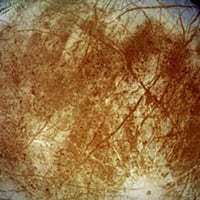The Native Youth Olympics
Since the early 70s, the Native Youth Olympics have showcased the traditional games of the Alaska Native people:
Our Alaska Native ancestors developed traditional games in order to test and prove crucial abilities that governed everyday life. Competition was created with each other to hone their ability to hunt and fish for daily survival in the traditional way of life. The creators of the NYO Games wanted an opportunity to demonstrate their favorite traditional Native contests of their forefathers.
I found out about this via a highlight reel on Instagram — here’s last year’s competition highlights:
You can check out a list of the competitive events; they include:
- One-foot High Kick: “In many cultures, the One-Foot High Kick was used for signaling a successful hunt.”
- Indian Stick Pull: “The Indian Stick Pull represents grabbing a slippery salmon, and was used traditionally to develop hand and arm strength.”
- Kneel Jump: “Historically, the Kneel Jump was a game used to strengthen the leg muscles for jumping from ice floe to ice floe, and for lifting prey after a successful hunt.”
- Seal Hop: “The Seal Hop is a variation of the Inuit Knuckle Hop, and used traditionally as a game of endurance and stamina, and for sneaking up on a seal, mimicking the mammal’s movement on the ice.”
- Two-foot High Kick: “The Two-Foot High Kick was historically used to communicate the success of a spring hunt.”
I love these events. I think my favorite is a reintroduced event for the 2024 games (just concluded): the Toe Kick, which returned after a 10-year hiatus. Here’s how you do it:
Here’s a short documentary about the NYO and athlete Autumn Ridley from 2013 — her event is the Alaskan High Kick, perhaps the most impressively athletic event:





Comments 0
Hello! In order to comment or fave, you need to be a current kottke.org member. If you'd like to sign up for a membership to support the site and join the conversation, you can explore your options here.
Existing members can sign in here. If you're a former member, you can renew your membership.
Note: If you are a member and tried to log in, it didn't work, and now you're stuck in a neverending login loop of death, try disabling any ad blockers or extensions that you have installed on your browser...sometimes they can interfere with the Memberful links. Still having trouble? Email me!
In order to comment or fave, you need to be a current kottke.org member. Check out your options for renewal.
This is the name that'll be displayed next to comments you make on kottke.org; your email will not be displayed publicly. I'd encourage you to use your real name (or at least your first name and last initial) but you can also pick something that you go by when you participate in communities online. Choose something durable and reasonably unique (not "Me" or "anon"). Please don't change this often. No impersonation.
Note: I'm letting folks change their display names because the membership service that kottke.org uses collects full names and I thought some people might not want their names displayed publicly here. If it gets abused, I might disable this feature.
If you feel like this comment goes against the grain of the community guidelines or is otherwise inappropriate, please let me know and I will take a look at it.
Hello! In order to leave a comment, you need to be a current kottke.org member. If you'd like to sign up for a membership to support the site and join the conversation, you can explore your options here.
Existing members can sign in here. If you're a former member, you can renew your membership.
Note: If you are a member and tried to log in, it didn't work, and now you're stuck in a neverending login loop of death, try disabling any ad blockers or extensions that you have installed on your browser...sometimes they can interfere with the Memberful links. Still having trouble? Email me!